
The Good Brigade / DigitalVision via Getty Images
The Science Behind Yoga For Stress Relief
Some time on the mat can calm your senses.
By Team Peloton•
Modern living is anything but relaxing. With the demands of work, household chores, financial responsibilities, relationships and more, it can be difficult just to catch your breath, let alone give your mind and body the care needed to stay healthy. Enter: yoga poses for stress relief that you can rely on when you need a moment of calm.
How Yoga Relieves Stress
Nearly everyone is affected by stressful situations on a regular basis, especially if you have a high-pressure job. Left untreated, stress can contribute to many physical and mental health issues including:
High blood pressure
Heart disease
Digestive issues
Fatigue
Lack of focus
Depression
Anxiety
And that’s just to name a few.
Numerous studies have found that yoga plays an important role in reducing stress, decreasing blood pressure, improving a sense of well-being, and decreasing anxiety levels. A 2024 Frontiers in Public Health study found that yoga in general was highly effective at reducing occupational stress and preventing burnout.
Yoga allows you to focus on meditation, mindful breathing, and beneficial postures, which can help lower blood pressure, increase lung capacity, and improve respiratory function and heart rate. According to research, the deep breathing and meditation associated with yoga work on the hypothalamic-pituitary-adrenal axis (HPA) of your brain, which controls your sympathetic nervous system (the fight or flight response) as well as your parasympathetic nervous system, which tells you when to chill out. Yoga can reduce your sympathetic nervous system activity and increase your parasympathetic response, reducing your heart rate and blood pressure.
Yoga can also boost your body’s production of hormones (such as endorphins) and endocannabinoids, which promote feelings of calmness and happiness—not to mention helping you to better manage physical pain and emotional distress. Research has also shown that yoga can reduce the body’s production of cortisol, a hormone your body makes during periods of intense physical and psychological stress.
Benefits of Yoga for Mental Health
In addition to helping you destress, turning to yoga for stress relief can be the start of cultivating a better relationship with yourself. A 2024 study published in the Journal of Health Psychology found that participants in Kundalini yoga experienced more spiritual well-being and self compassion after six weeks of practice—more incentive to add it to your workout routine.
Yoga is also a promising defense against major depressive disorder (MDD), defined as a loss of pleasure and/or interest in activities that lasts two weeks or longer. When used in tandem with antidepressants, it can be an effective piece of treatment.
Plus, practicing yoga can reduce inflammation in your body, and it can be used as an alternative treatment for mental health disorders such as OCD, anxiety, and depression.
The calming effect yoga has on your body’s internal world is well-documented. But yoga also promotes mental clarity: Researchers at UCLA’s Semel Institute of Neuroscience and Human Behavior found that yoga therapy was more effective than memory enhancement training (MET) for increasing long-term memory in older women at risk for Alzheimer's. It can also put you in a calmer headspace for sleep, and the community aspect of practicing at a studio can be a catalyst for group healing and stress management.
Getting Started With Calming Yoga
The great thing about yoga is that it doesn’t require much beyond your own commitment to your physical and mental well-being. Depending on how your body feels, you may want to use a yoga mat or towel when sitting on the floor. You may also want to use a yoga block, blanket, or meditation cushion to support your body. Other than that, you simply need a spot where you can be alone and uninterrupted. (Pro tip: You may want to practice mindful yoga outdoors where you can experience the colors, sounds, and feel of nature.)
Ready to start practicing yoga for stress relief? Here are some easy ways to get started.
Gentle Stretching
Gentle stretching exercises, performed at a slower pace with less intense positions, are a great way to start. Warm-up stretches may include:
Leg Stretches: Lie down on your back on the met. Start working your legs by lifting them perpendicular to the floor, either one at a time or both together. Then, with your low back firmly rooted and your pelvis neutral, lift one leg off the floor and aim the sole of your foot at the ceiling. Keep the other foot on the floor or bring it up to join the first one.
Pelvic Tilts: Begin by lying down on your back with your knees bent. Press your lower back gently against the floor, tilting your pelvis toward your face, and then release it.
Easy Pose: Sitting in a comfortable cross-legged position, do a few neck rolls. You can place one or two folded blankets under your seat so that your knees are lower than your hips.
Easy Twist: Keeping your legs in the easy pose, twist to the right, bringing your left hand to your right knee and the right hand behind your back. Take your gaze gently over your right shoulder. Then twist to the left, bringing your right hand to your left knee and the left hand behind your back, gazing over your left shoulder.
A slower and gentler approach to yoga allows you to move at a comfortable pace and creates less strain on your muscles and joints. You can flow from one pose to the next, or stay with one pose for a longer period of time. Either way, the stretching and breathing will help you feel more relaxed.
Breathing Exercises
Breathing is essential to yoga’s therapeutic benefits. It’s a great way to slow down, collect yourself, and become present in the moment. For example, try this breathing exercise:
While sitting, allow your shoulders to relax. Extend your tailbone down and contract your stomach, which will help to straighten your back and lengthen your back from the top of your head. Inhale for several seconds while pushing your stomach away from your body. Then exhale, allowing your stomach to come back to your body. Do this at least four times.
Looking for more? The Peloton App features quick 5- and 10-minute meditations you can incorporate into your routine.
Try the Peloton App for Free
Mindfulness
As you move into each yoga posture, it’s essential that you focus your thoughts on your own self-care, self-respect, and your moment-by-moment experience. This mindfulness helps to put you in the right frame of mind to get the most out of yoga for stress relief.
Bringing mindful awareness to any physical activity creates an alert focus to whatever you’re doing in that exact moment, thereby transforming the movement into a form of meditation.
In addition to creating a deep sense of awareness, being mindful helps you to deal with the stressful challenges of everyday life, demonstrate less reactivity, and accept perceived negative situations for what they are, so you can begin to neutralize them and more easily move through them.
10 Yoga Poses for Stress Relief
These yoga poses for stress relief are just a few favorites of our Peloton instructors.
1. Sun Salutation Pose
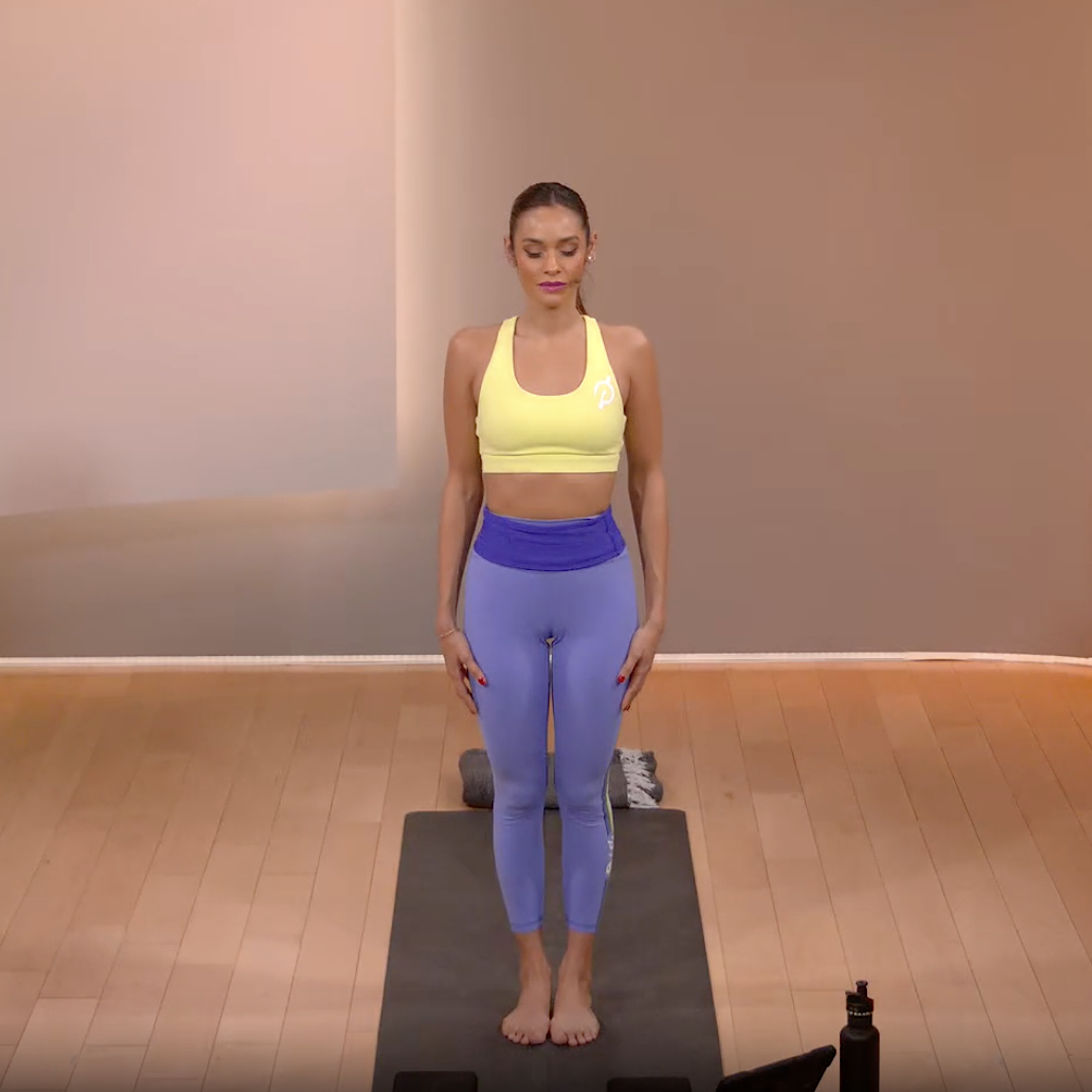
The sun salutation pose is actually a series of postures that warms, strengthens, and aligns the entire body. The simplest of these is as follows:
Stand with your feet slightly apart and parallel to each other. Stretch your arms (though not rigidly) down alongside your torso with your palms turned out and your shoulders relaxed. Inhale and sweep your arms overhead in wide arcs. If your shoulders are tight, keep your hands apart and gaze straight ahead. Otherwise, bring your palms together, drop your head back, and gaze up at your thumbs.
2. Sitting Pose

Sitting postures are those asanas that start with you sitting down on the floor or in a chair. Try this basic sitting pose:
Sit on the floor and stretch your legs out straight in front of you. Next, bend your right leg at the knee, placing your right foot on your left thigh with the help of your hands. Then, fold your left leg as well at the knee, holding it with your hands, and bring it to rest on your right thigh. Both of your feet should be close to your navel. Be sure that the soles of your feet are turned upward. Now stretch your arms out, letting your palms rest against your knees. Sit erect while maintaining this posture.
3. Child’s Pose
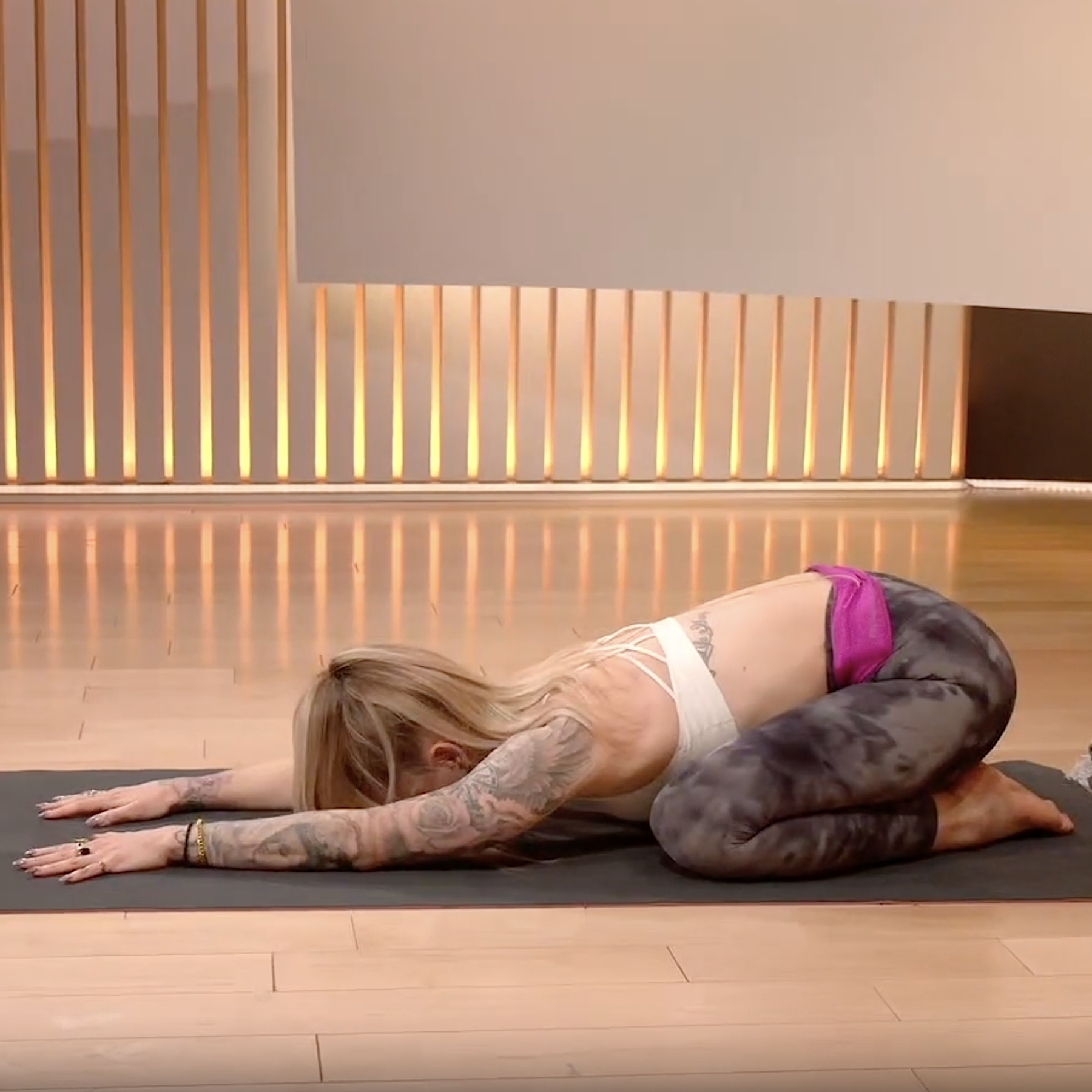
Sitting postures are those asanas that start with you sitting down on the floor or in a chair. Try this basic sitting pose:
Sit on the floor and stretch your legs out straight in front of you. Next, bend your right leg at the knee, placing your right foot on your left thigh with the help of your hands. Then, fold your left leg as well at the knee, holding it with your hands, and bring it to rest on your right thigh. Both of your feet should be close to your navel. Be sure that the soles of your feet are turned upward. Now stretch your arms out, letting your palms rest against your knees. Sit erect while maintaining this posture.
4. Happy Baby Pose

For this fun pose, lie flat on your back on the floor or a mat. With your head flat on the mat, bend your knees toward your chest at a 90-degree angle. Face the soles of your feet up toward the ceiling. Reaching forward, grab and hold the inside or outside of your feet and spread your knees apart, shifting them toward your armpits. Then, flex your heels into your hands and gently rock from side-to-side. Remain in this position for several breaths while inhaling and exhaling deeply.
5. Thread the Needle Pose

Begin this pose on all fours. Then take your left arm and begin to thread it across the mat and over to the right side. Next, gently drop down to your shoulder and the left side of your head. Your right arm can stay supporting you or you can reach it overhead or wrap it around your back. Hold this posture for 3-5 minutes on each side, then come down very slowly.
6. Standing Forward Fold Pose
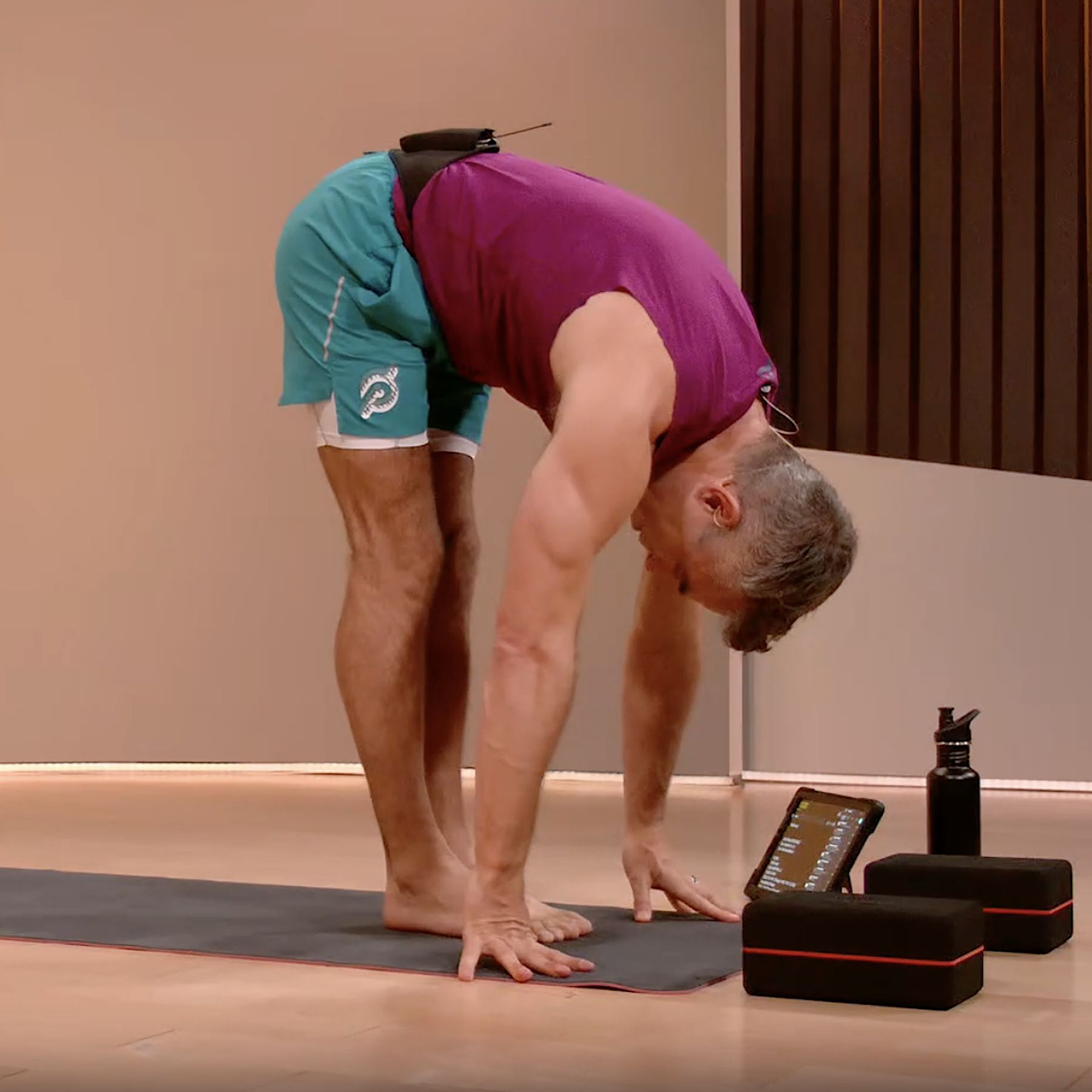
Designed to promote calmness and balance your nervous system, this yoga pose stretches your hamstrings, calves, hips, and back, helping to reduce stress and fatigue. It also stimulates the liver and kidneys and helps relieve headaches and insomnia.
From a standing position, bend your knees and hinge forward from your hips, placing your hands in front of your feet. Make sure you engage your core and exhale as you fold. Then shift your weight to the balls of your feet. If your hamstrings are tight, bend your knees slightly to avoid straining your lower back. Otherwise, if you can comfortably do so, lengthen through the back of your legs, remembering to keep your weight on the balls of your feet.
Next, grab hold of each of your elbows with the hand from the other arm. Focus on softening your jaw, neck, and around your eyes, and clear thoughts from your mind. Hold this pose for five breaths, then slowly rise back up to the standing position.
7. Cobra Pose
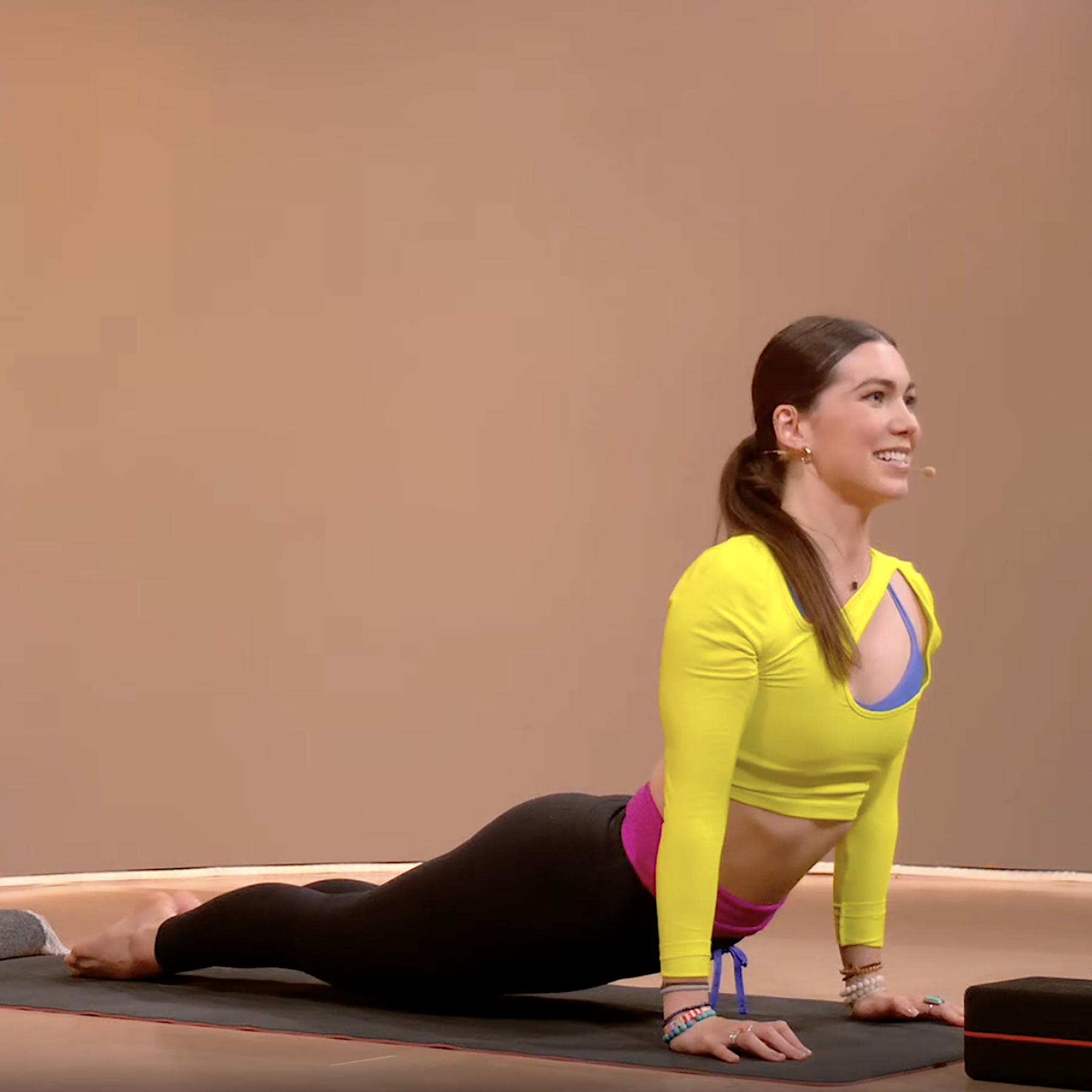
For this pose, place your palms flat on the ground directly under your shoulders. Then bend your elbows straight back and hug them into your sides. Pause for a moment looking straight down at your mat with your neck in a neutral position and while anchoring your pubic bone to the floor. Next, inhale to lift your chest off the floor. Roll your shoulders back but keep your low ribs on the floor. Make sure your elbows continue hugging your side without winging out to either side. Do not crank up your head. Keep your gaze fixed on the floor. Hold this pose for up to 30 seconds while maintaining even breathing. To release, exhale, drop your head to the floor, and lower your body by using your arms.
8. Cat Pose
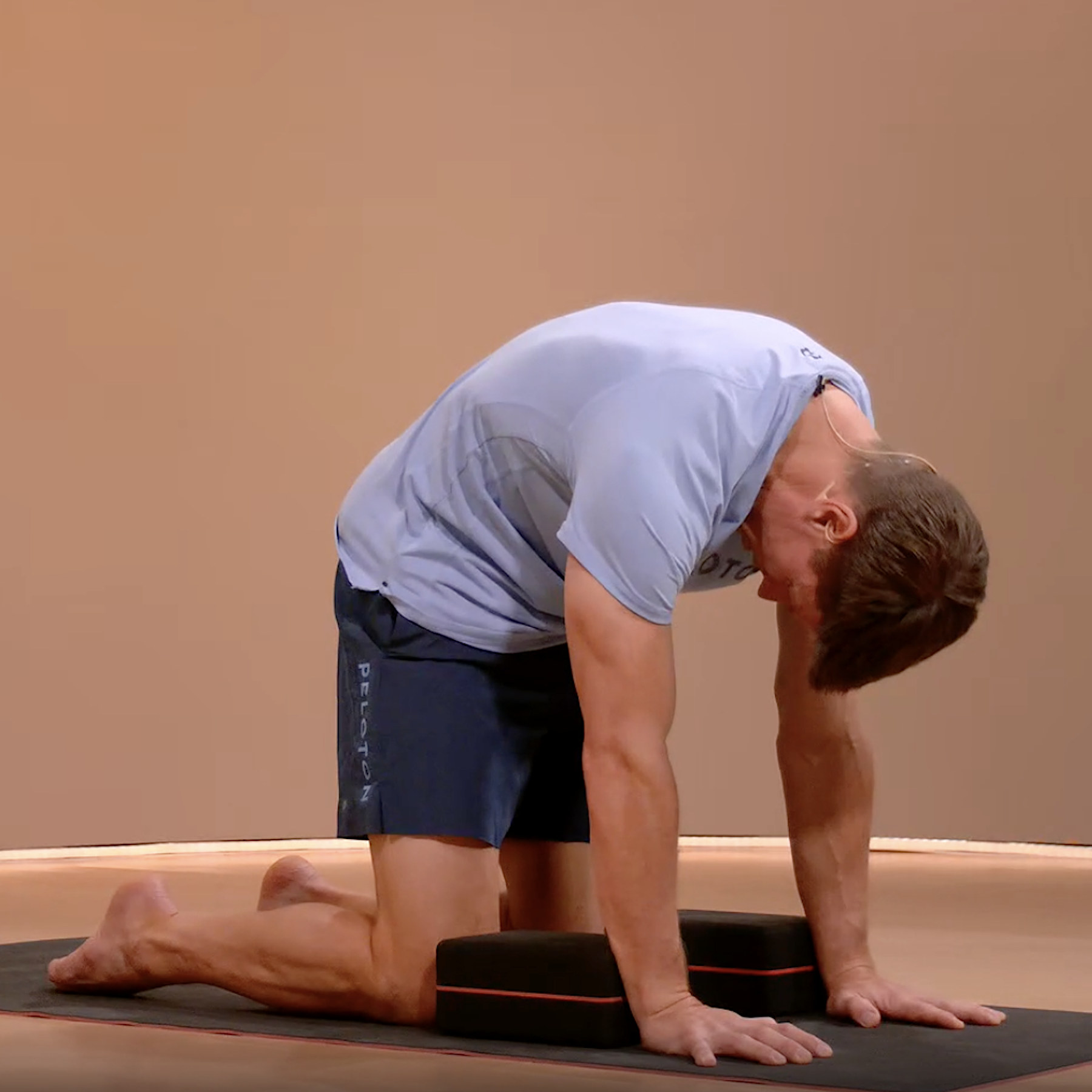
This pose mostly focuses on stretching your lower back, but also affects the muscles of your hips, upper back, and lungs, releasing tension, increasing spinal flexibility and mobility, and creating emotional balance.
You start on your hands and knees (like a cat), and exhale while drawing your stomach into your spine and rounding your back to the ceiling as far as you can. The top of your head should be pointing to the floor. On your inhale, return to your original position. Repeat this movement 10 times, keeping your shoulders relaxed and your arms straight.
9. Reclined Twist Pose

Start this pose by lying on your back with your arms out, so you’re a T-shape. Then move your hips a little over the right and bring your knees over to the left. You can support your knees with a bolster or blocks. Hold this position for 3-5 minutes. To come out of the pose, simply bring your knees over your hips and then repeat on the other side.
10. Legs-Up-the-Wall Pose
To perform this pose, sit on the floor facing a wall. Lower your head and shoulders to the floor, lying on your side. Then roll onto your back and stretch your legs up the wall with your feet comfortably hip-distance apart. You can adjust your position by moving your tailbone toward the wall. Find a comfortable position for your arms at your sides with your palms turned up. Relax your legs against the wall and release all effort. Settle into the pose and breathe. Hold this position for at least 10 minutes. To come out of the pose, bend your knees and roll to your side. Remain there for a few breaths before using your arms to slowly push yourself back up to a seated position.
Looking for more yoga? Try the Peloton App, where you can filter via options such as class time, type, or instructor to find the right yoga class to fit your individual needs.
This content is for informational and educational purposes only and does not constitute individualized advice. It is not intended to replace professional medical evaluation, diagnosis, or treatment. Seek the advice of your physician for questions you may have regarding your health or a medical condition. If you are having a medical emergency, call your physician or 911 immediately.
Level up your inbox.
Subscribe for a weekly dose of fitness, plus the latest promos, launches, and events.
By providing your email address, you agree to receive marketing communications from Peloton.
For more about how we use your information, see our Privacy Policy.






